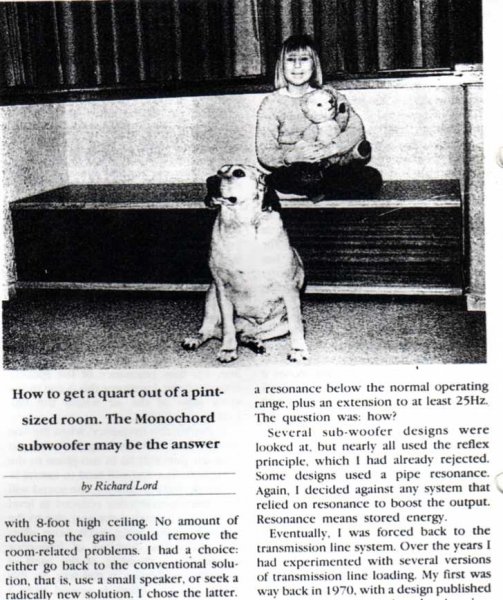Micro
Indeed it is.Subwoofer placement is critical to eprformance and there is usually one best spot along the front wall. This can be found through trial and error using a box subwoofer. One you move around until you've found through listening and measuring, the best placement ... That is where you cut the opening.. Once yo have cut it , you can't move this opening around .
.
Some people just make a hole in the middle and EQ to compensate for placement that works rather well because of the huge headroom, thus latitude afforded by the multiplicity of drivers .. It is not ideal, the least you EQ the better the results so.. find a spot, then cut your bunker wall ..Buddget for such trial could be be less than $1K and you may actually like t enough to leave it at that .. for a while .. you're an audiophile after all
..Buddget for such trial could be be less than $1K and you may actually like t enough to leave it at that .. for a while .. you're an audiophile after all 
Indeed it is.Subwoofer placement is critical to eprformance and there is usually one best spot along the front wall. This can be found through trial and error using a box subwoofer. One you move around until you've found through listening and measuring, the best placement ... That is where you cut the opening.. Once yo have cut it , you can't move this opening around
Some people just make a hole in the middle and EQ to compensate for placement that works rather well because of the huge headroom, thus latitude afforded by the multiplicity of drivers .. It is not ideal, the least you EQ the better the results so.. find a spot, then cut your bunker wall


















